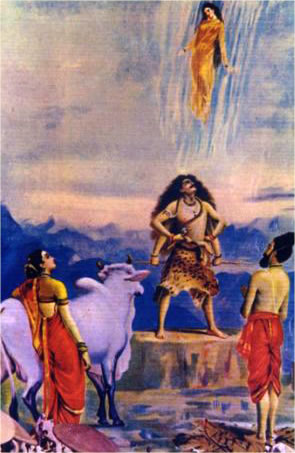COMPOSED OVER five centuries ago, the Shiva Samhita is one of the most
celebrated root texts of Hatha Yoga. It includes beautiful teachings found
nowhere else. This edition contains the original Sanskrit, properly edited and
printed for the ...
Author: James Mallinson
Shiva, o destruidor do Tripura, o nico Primeiro e a mais elevada Causa. O sbio O alcana, quem imutvel, indecadente, todo paz, imensurvel e livre de todos os males o Mais Elevado Sucesso. Oh, Grande Deusa!, esta cincia de Shiva a Grande Cincia (mahavidya); ela sempre foi mantida em segr edo. The Shiva samhita: a critical edition and an English translation / James. The Shiva Purana is one of eighteen Purana genre of Sanskrit texts in Hinduism, and part of the. Shatarudra Samhita – 3,; Sahasrakotirudra Samhita – 11,; Kotirudra Samhita – 9,; Vayaviya Samhita – 4,; Dharma Samhita – 12, The Jnanasamhita in one manuscript. Dharmo rakshati rakshitah (Dharma protects those who protect it) The Puranas A compact, English-only version of the Major 18 Puranas in one document. Shiva Sanhita is a Sanskrit text on yoga, written by an unknown author. The text is addressed by the Hindu god Shiva to his consort Parvati. It is one of three major surviving classical treatises on hatha yoga, the other two being Gheranda Samhita and Hatha Yoga Pradipika. A website to display Sanskrit texts in multiple languages. Email Twitter Facebook Github.
Publisher: YogaVidya.com

ISBN: 9780989996617

Category: Health & Fitness
Gheranda Samhita Pdf In Hindi

Page: 192
View: 424
This affordable, authoritative edition of the Shiva Samhita contains a new introduction, the original Sanskrit, a new English translation, nine full-page photographs, and an index. It includes beautiful teachings found nowhere else. This is the first edition of this classic Yoga text to meet both high academic and literary standards, the first to be based on a truly critical study of the Sanskrit manuscripts. It’s for people who practice Yoga, and for anyone with an interest in health and fitness, philosophy, religion, spirituality, mysticism, or meditation.Shiva Samhita Semen
Table of Contents
IntroductionThe Vital Principle
Knowledge
Practice
Mudras
Meditation
Contributors
Index
From the Introduction
Composed over five centuries ago, the Shiva Samhita is one of the most celebrated root texts of Hatha Yoga. It includes beautiful teachings found nowhere else. This edition contains the original Sanskrit, properly edited and printed for the first time, and a new, accurate translation thereof. It also features photographs of the asanas and mudras described therein.Excerpt
The Lord said, “There is one eternal true knowledge, without beginning or end. No other real entity exists. The diversity which is found in this world appears through the imposition of the senses on knowledge and for no other reason.Affectionate toward his devotees, the Lord, having cast aside opinions born of the ignorance of sophists, shall now pronounce a Yoga teaching that bestows liberation on the selves of all beings, so that beings whose minds are set on no other destiny may have knowledge of their selves.
Some praise truth and others asceticism and purity. Some praise patience and others equanimity and honesty.
Some praise charity and others ancestor worship. Some praise action and some absolute indifference.
Some wise men praise the rites of the householder and some say that rites such as the fire sacrifice are the best.
Some praise Mantra Yoga and pilgrimage. In this way, many means to liberation are taught.
About the Author
James Mallinson is a graduate of Eton and Oxford, holds a master’s from the School of Oriental and African Studies, and returned to Oxford University for his doctorate. He is presently a Senior Lecturer in Sanskrit and Classical and Indian Studies at SOAS, University of London.Notes on Meter
The Shiva Samhita's meter is mainly anushtubh, with just a few vipulas, but verses 1.1, 1.91, 5.180 and 5.193 are in shalini, 5.30 is in vamshamala and 5.194 and 5.260 are in Indravajra.Bibliography
The AmRtasiddhi of MAdhavacandra. Acc. No. 1242 in the manuscript collection of the Maharaja Mansingh Pustak Prakash, Jodhpur.The BRhatkhecarIprakAza. A commentary on the KhecarIvidyA by BallAla. Manuscript 14575 in the collection of the Scindia Oriental Research Institute Library, Ujjain.
The DattAtreyayogazAstra, ed. Brahmamitra AvasthI. Delhi: SvAmI KezavAnand YogasaMsthAn. 1982.
The Siva Samhita, tr. Rai Bahadur Srisa Chandra Vasu. Allahabad: Panini Office. 1914-15.
The YogacintAmaNi of ZivAnanda SarasvatI, ed. HaridAsa VidyAvAgIza (BhAgavatAcArya). Calcutta. Undated.
The Yuktabhavadeva of Bhavadeva Mizra, Ed. M. L. Gharote and Vijay Kant Jha. Lonavla: Lonavla Yoga Institute. 2002.

Comments are closed.